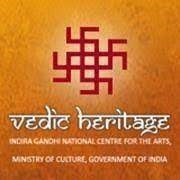Free Courses Sale ends Soon, Get It Now


Free Courses Sale ends Soon, Get It Now



Disclaimer: Copyright infringement not intended
Context: Union Home Minister said the government was securing the knowledge in India’s ancient scriptures and manuscripts for the future through technology.
Details:
About the portal:
Objectives:
About IGNCA:
Aims & Objectives:

The Rig-Veda:
The Yajur-Veda: A priestly handbook for use in the performance of yajnas (sacrifices) It is divided into two sections, the earlier “black” and the more recent “white.”
Sama-Veda: This consists of chants and melodies to be sung during worship and the performance of yajna.
Atharva-Veda: Contains hymns, mantras and incantations, largely outside the scope of yajna.
Four types of composition:
Supplementary literature:
|
PRACTICE QUESTION Q) Discuss the significance of Vedic learnings in contemporary times. Enumerate the various steps taken by the government in this regard. (150 words) |
https://epaper.thehindu.com/ccidist-ws/th/th_delhi/issues/29780/OPS/GKHB1BBDG.1+GN3B1C805.1.html
© 2024 iasgyan. All right reserved